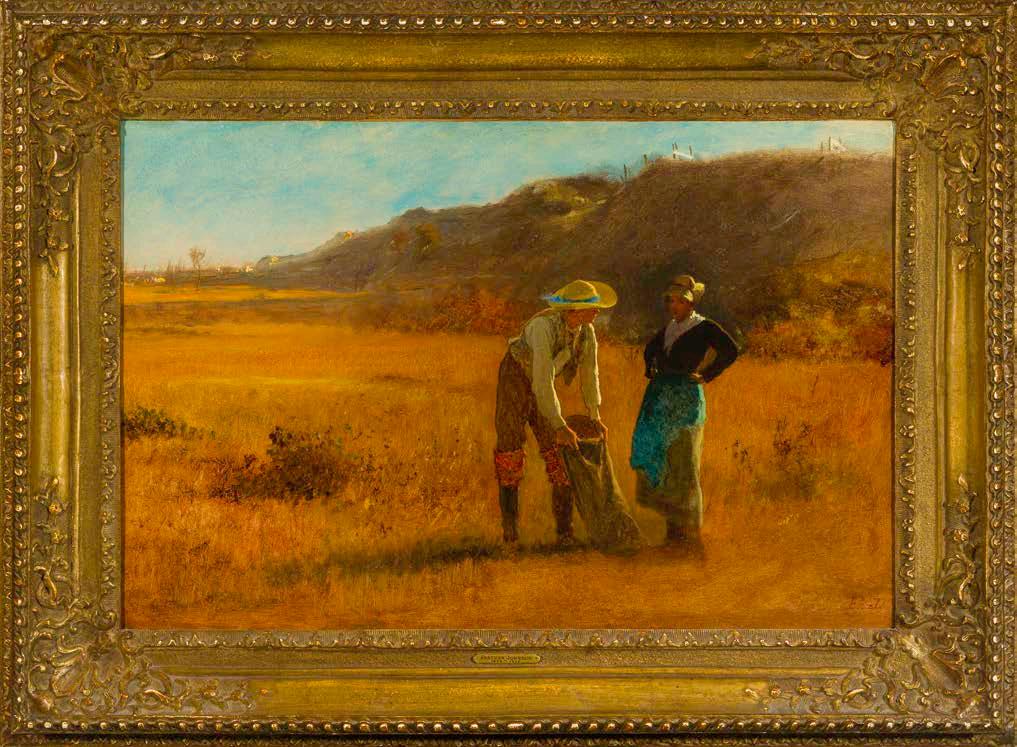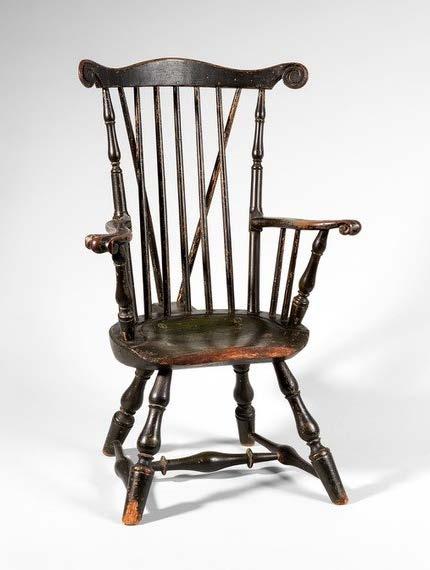
5 minute read
Connecting…
FROM THE BOARD PRESIDENT AND GOSNELL EXECUTIVE DIRECTOR
Since its founding in 1894, the Nantucket Historical Association has been a collecting organization. With support from generous individuals, families, and the Friends of the Nantucket Historical Association, we have been able to, over nearly 130 years, develop an extensive and remarkable collection. Paintings, textiles, manuscripts, journals, logbooks, furniture, Lightship baskets, scrimshaw, photographs, oral histories, historic properties, and more. Collectively these items help tell stories of Nantucket Island and its evolution. The extensive additions to our collection in the past year, a few of which are highlighted in this issue, have done much to expand the narratives we can tell. From a stunning child’s Windsor chair made on the island in the 18th century to Eastman Johnson’s masterpiece study for Cranberry Pickers to John Walling’s Naval commissioning sword to Elizabeth Rebecca Coffin’s beautiful painting, At Eventide, to the archives of the Nantucket Aids network, and more—we are excited to now care for and share these important artifacts— touchstones of a vibrant and varied Nantucket history.
A museum collection such as this must be actively managed. Some of the early members of the NHA realized this within the first decade of the organization’s existence as they began to grapple with finding sufficient space to store and display the artifacts. The Fair Street Museum, built in 1904, was a poured concrete structure ahead of its time. Intended as a fireproof vault, the structure is now the NHA’s Research Library, continuing to protect collections and provide a welcoming location for research. As you will see, we are about to engage in a significant restoration of that property to ensure that we may continue to best preserve items, study them, encourage research, and highlight the histories they represent and help illuminate. As Mary Starbuck noted in her 1897 plea for constructing the Fair Street Museum, “…many valuable relics will come back to the island.” Judging from this past year, her prescient advice remains accurate.
But the NHA exists for more than just the sake of collecting. We are not simply preserving concrete bunkers for the storage of artifacts. At the heart of our mission lies storytelling. And if we are to tell more accurate and inclusive stories, we must accept that our collection is incomplete and remains a work in progress. As Brown University professor and museum scholar Steven Lubar has written, museums need to “collect and connect.” As the NHA board and staff embark on creating a new strategic plan, we are carrying that idea forward. Connecting past and present with diverse communities on the island, we realize we are missing collections and stories. We must seek to fill important gaps and ask new questions: What stories have not been told? How do we tell those stories? Who can best tell them? How do we build a collection that is more representative, one that reveals a broader cross-section of Nantucket’s community members who are both shaping and responding to the joys and challenges of living on this faraway island? Nantucket’s history is being written every day. We hope you will connect with us and help consider how, together, we might collect and share it.
Annabelle Fowlkes President, Board of Trustees
Niles Parker Gosnell Executive Director
Cranberry Pickers by Eastman Johnson
Cranberry Pickers depicts a woman and man harvesting cranberries on Nantucket’s north shore. Painted around 1877, it is one of approximately twenty works Johnson created in preparation for his masterpiece Cranberry Harvest, Island of Nantucket (1880), which is now in the collection of the Timken Museum in San Diego.
Eastman Johnson (1824–1906) is the primary artist of national importance associated with Nantucket in the late nineteenth century. He and his wife began summering on the island in 1870 and returned annually through 1890, residing from 1871 onward at a property he purchased on what is now Cliff Road. The artist’s island sojourns inspired some of his most enduring works as a major genre painter, portraitist, and chronicler of American life.
This painting of cranberry pickers is extremely unusual because it is both a study and a stand-alone work that, in its specificity and beauty, surpasses all the other images Johnson produced related to his final Cranberry Harvest painting. Last exhibited publicly over thirty years ago, the painting was feared lost until recently. With most of Johnson’s best works already in museum collections, this rediscovered painting presented a rare chance for the NHA to secure one of Johnson’s finest depictions of Nantucket for the people of Nantucket.
The painting will go on view this summer at the Whaling Museum and will be featured in an exhibition of Eastman Johnson and Winslow Homer paintings of women coming to the NHA in 2025.
This acquisition was made possible thanks to an outpouring of generous support from numerous private donors, NHA board members, and the Friends of the Nantucket Historical Association.
Child’s Windsor Chair
This chair is a one-of-a-kind piece. Not only is this remarkable Windsor chair notable for its size and design for a child, as well as its excellent condition, but its Nantucket origins make it an artifact that, without a doubt, belongs in the NHA’s collection.
The Nantucket Windsor chair form evolved from familiar Philadelphia Windsor chair designs, examples of which were commonly imported to the island throughout the second half of the eighteenth century. Chairs made by two Nantucket chairmakers, Frederick Slade and Charles Chase (1731–1815), are seen as the most impressive and representative specimens of the type.
This chair is a beautiful scaled-down version of a classic Nantucket braced fan-back armchair, made from hard and soft woods and potentially with the original dark green paint still intact. The craftsmanship displayed by its elegant crest rail scrolls and carved knuckles and the overall structural grace it emulates can likely be attributed to Frederick Slade with further research.
The chair will go on view this spring in the Whaling Museum.

Thanks to a generous gift from the Friends of the Nantucket Historical Assocation.
At Eventide by Elizabeth Rebecca Coffin
Over the last year, the NHA has acquired five works by Elizabeth Coffin to complement the seven already in the collection. The NHA is excited to be the home for these works, and looks forward to studying them and displaying them for the community and visitors alike in future exhibitions.
Elizabeth Rebecca Coffin (1850–1930) was an educator, philanthropist, and artist. Born in Brooklyn, where she lived most of her life, she studied at Vassar College, the Academy of Fine Arts in the Hague, the Art Students League in New York, and the Pennsylvania Academy of Fine Arts. Among her instructors were Johan Philip Koelman, William Merritt Chase, and Thomas Eakins. Her father was from Nantucket and a descendant of the early English settlers. She began summering on the island in the early 1880s, eventually buying a house in which she later retired. Her signal achievement for Nantucket was the revival and transformation of the Coffin School, which she helped guide for more than two decades.
Coffin painted At Eventide (1890) while summering on Nantucket, and it is one of her most appealing images. It captures two boys beside a dory at the water’s edge, holding a basket of shellfish. The painting stands out due to Coffin’s ability to capture the effects of natural light within a landscape. The influence of Coffin’s teacher and friend Thomas Eakins, who emphasized the importance of light, is apparent in this work. The painting is believed to be the same one Coffin exhibited at the National Academy of Design in 1891.

The painting will go on view this spring in the Williams Forsyth Gallery at the Whaling Museum.
Thanks to a generous gift from Carolyn Coffin Marlowe, in memory of her parents, William W. and Alma Killen Coffin.










